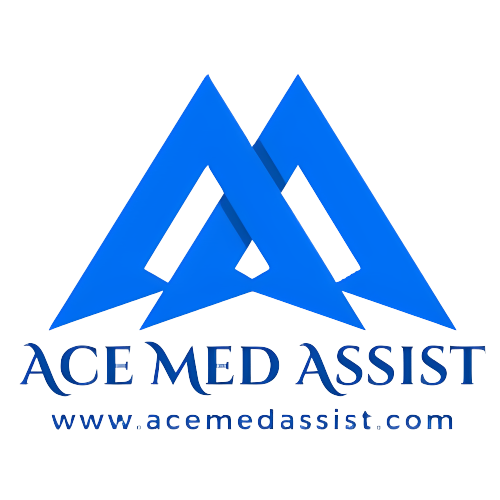Key Features:
- Medical auditing is a process that ensures compliance and quality care in the healthcare industry.
- Medical auditing services involve reviewing medical records and procedures to identify areas for improvement.
- Medical auditing is important for reducing the risk of non-compliance and improving patient outcomes.
- The effectiveness of medical auditing services can be limited by resource constraints and potential biases.
- Healthcare organizations can address these limitations by using technology and involving stakeholders.
- The use of technology, such as electronic health records and automated auditing tools, can streamline the auditing process.
- Involving stakeholders, such as patients and staff members, can help address potential biases and promote transparency in the auditing process.
- Addressing the limitations and challenges of medical auditing can lead to more accurate findings and improved patient outcomes.
In the healthcare industry, compliance with regulations and standards is crucial to ensure that patients receive high-quality care. Medical auditing services are an essential process that helps healthcare organizations achieve compliance with regulations and standards while promoting quality care. The process involves reviewing medical records and assessing whether the care provided to patients meets established standards.
In this article, we will explore the role of medical auditing in ensuring compliance and quality care in the healthcare industry.
What is Medical Auditing?

Medical auditing is a process of reviewing medical records to ensure that healthcare providers deliver high-quality care that meets established standards. The process involves assessing the quality of care, patient safety, and compliance with regulatory requirements.
The medical auditing service identifies areas for improvement, leading to better patient outcomes and reducing the risk of non-compliance. Typically, internal or external auditors perform the review as they have expertise and experience analyzing medical records.
How Does Medical Auditing Ensure Compliance?

Medical auditing services play a crucial role in ensuring compliance and quality care in the healthcare industry. Here are some ways medical auditing achieves this:
Ensures Compliance with Regulations and Standards:
Medical auditing helps ensure that healthcare providers comply with regulations and standards established by governing bodies such as the Joint Commission, Centers for Medicare and Medicaid Services (CMS), and other regulatory agencies. Compliance with these regulations and standards is crucial to avoid penalties, legal liabilities, and other negative consequences.
Medical auditing helps healthcare providers identify areas where they are not compliant with regulations and standards, allowing them to make necessary changes to achieve compliance.
Promotes Quality Care:
Medical auditing helps healthcare providers deliver high-quality care to their patients. The process involves reviewing medical records to assess the quality of care, patient safety, and compliance with regulatory requirements.
Medical auditing helps healthcare providers identify areas where they can improve the quality of care they deliver, leading to better patient outcomes. Medical auditing also helps to identify opportunities to implement best practices that promote quality care.
Identifies Areas for Improvement:
Healthcare providers can improve their policies, procedures, and operations through medical auditing. The process helps identify gaps in processes, policies, and procedures. It enhances the quality of care provided to patients.
It also helps healthcare providers identify opportunities for training and education to ensure staff members have the training to deliver high-quality care to patients.
Reduces the Risk of Non-Compliance:
Medical auditing helps healthcare providers reduce the risk of non-compliance with regulations and standards. Non-compliance can lead to significant consequences, such as legal liabilities, financial penalties, and negative publicity.
By identifying areas of non-compliance through medical auditing services, healthcare providers can take necessary corrective action to address the issue and avoid negative consequences.
Limitations of Medical Auditing Services

While medical auditing provided by medical billing companies is essential process for ensuring compliance and quality care, it is not without limitations. Two main limitations of medical auditing are resource constraints and the potential for bias.
Resource Constraints
Medical auditing can be a resource-intensive process. Healthcare organizations may not have enough resources, such as time, money, and staff, to conduct medical audits regularly. It is possible to outsource medical auditing to external firms, which can be costly.
Resource constraints can limit the frequency and scope of medical auditing, making it challenging to identify all areas for improvement. As a result, healthcare providers may not receive the full benefits of medical auditings, such as improved patient outcomes and reduced risk of non-compliance.
Potential for Bias
Another limitation of medical auditing is the potential for bias. Auditors may have preconceived notions about the quality of care provided by certain healthcare providers or may focus on certain aspects of care at the expense of others.
Auditors may also be influenced by personal biases, such as gender or race bias, which can impact the accuracy and effectiveness of medical auditing. Bias can lead to inaccurate findings, which can have negative consequences for healthcare providers.
Impact of Limitations on Medical Auditing
The limitations of medical auditing services can impact their effectiveness in ensuring compliance and quality care. Resource constraints can limit the frequency and scope of medical auditing, making it challenging to identify all areas that need improvement. It can lead to missed opportunities for improvement, which can negatively impact patient outcomes and compliance with regulations.
The potential for bias can also impact the accuracy and effectiveness of medical auditing. Biased auditors may miss areas where improvements can be made, leading to inaccurate findings and negative consequences for healthcare providers.
Exploring Solutions

To address the solutions for limitations and challenges of medical auditing, healthcare organizations can explore various strategies, such as the use of technology and the involvement of stakeholders.
Use of Technology
Healthcare organizations can leverage technology to streamline the medical auditing process and reduce resource constraints. For example, electronic health records (EHRs) can be used to store and access medical records, making the auditing process more efficient.
Automated auditing tools reduce the need for manual audits. The use of technology can also help eliminate potential biases by using objective criteria to assess the quality of care provided.
Involvement of Stakeholders
The involvement of stakeholders, such as patients, caregivers, and staff members, can help address potential biases in medical auditing. By including diverse perspectives in the auditing process, healthcare organizations can identify areas that need improvement from different viewpoints.
Stakeholders can also provide valuable feedback on the quality of care provided, helping healthcare providers identify areas for improvement. Involving stakeholders can help promote transparency and accountability in the auditing process, leading to more accurate findings and improved patient outcomes.
Conclusion
Medical auditing services lead to better patient outcomes and reduce the risk of non-compliance. The process helps healthcare providers comply with regulations and standards, promote quality care, identify areas for improvement, and reduce the risk of non-compliance.
Overall, medical auditing plays a vital role in ensuring compliance and quality care in the healthcare industry. Healthcare providers should invest in medical auditing to ensure that they are delivering high-quality care that meets established standards and complies with regulations.









